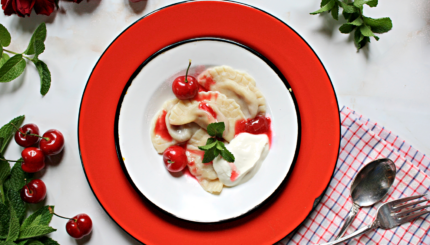For those fortunate souls who have wandered the picturesque streets of Lisbon — or those who may have indulged in a bit too much Instagram scrolling — you’ve certainly come across the iconic pastel de nata (aka pastéis de nata). Its perfection lies in a buttery, flaky crust, a custard filling, and the tantalizing taste of singed, caramelized edges. Unfortunately, obtaining this famed treat demands an extra dose of patience, standing in lengthy queues, often behind eager French tourists.
As a devotee of all things sweet and creamy, yet harboring a strong disdain for queues and appearing in others’ TikTok recordings, I am thrilled tell you about a hidden gem of Portuguese desserts: bolas de Berlim (Berlin balls), or Berliners, a delicious treat with a rich Jewish history.
Much like its renowned counterpart, the illustrious pastel de nata, bolas de Berlim boasts an egg cream filling. However, what sets it apart is its delightful fried donut-like shell. Displayed proudly in shop windows, gas stations and dimly lit bars filled with grumpy middle-aged men watching soccer on high volume, this pastry can be found everywhere.
While a year-round delight, the demand for bolas de Berlim peaks during the summer months, especially on Lisbon’s sun-kissed beaches, where vendors skillfully cater to sunbathers seeking a sweet seaside indulgence.
The Nosher celebrates the traditions and recipes that have brought Jews together for centuries. Donate today to keep The Nosher's stories and recipes accessible to all.
Renowned food critic Fortunato da Câmara captures the essence of bolas de Berlim‘s popularity, asserting, “Just as there are no pastry shops in Portugal without pastéis de nata, there are no beaches without bolas de Berlim.”
And the fascinating Jewish story?
According to historian Irene Flunser Pimentel, bolas de Berlim were introduced to Portugal by a Jewish family seeking refuge during World War II. The Davidsohn family, fleeing from Hamburg in northern Germany, arrived in Portugal on October 6, 1935, before the outbreak of the war. The tale is chronicled in Pimentel’s 2006 book, “Jews in Portugal during World War II,” where Ruth Davidsohn, a Jewish refugee and the protagonist of this narrative, is interviewed by sociologist Christa Heinrich, a collaborator of Pimentel.
Amid the war, Jewish refugees in Portugal worked in various ways to make ends meet. The Davidsohn family ventured into the business of selling cakes to Germans living in Portugal. At that time, bolas de Berlim were fried as they are today, but Ruth Davidsohn filled them with berry, strawberry or raspberry jam. This was typical of the Berliners (aka Krapfen) eaten in Germany, write Gabrielle Rossmer Gropman and Sonya Gropman in “The German-Jewish Cookbook.” Jews ate these yeasted donuts filled with fruit jam at Hanukkah, while non-Jewish Germans ate them during New Year celebrations.
According to Étienne Roeder, soon after Portuguese bakeries started making the Berliners themselves, the traditional jam-based filling was replaced with egg cream. “Since the jam filling was not very well received by the Portuguese, it was soon replaced by the creme pasteleiro,” he writes.
Less than a decade after the Davidsohn family’s arrival, several commercial establishments in Lisbon were serving these delectable treats to the public. Hermann Grab, a Hungarian music critic and writer, even references a café on Avenida da Liberdade, where patrons would enjoy Berliners covered in sugar syrup, paired with cold tea.
While the details of the Davidsohn family’s departure from Portugal remain uncertain, it is believed that, like many Jewish families from Germany at the time, they eventually emigrated to the United States. The legacy of bolas de Berlim, however, endures in Portugal, a testament to the sweet intersection of history and culinary delight.



